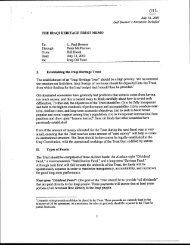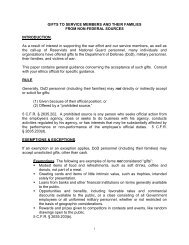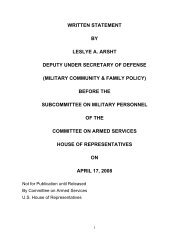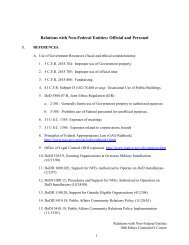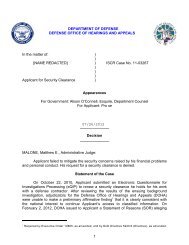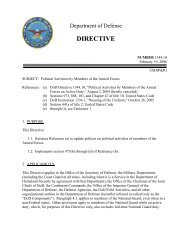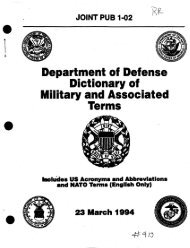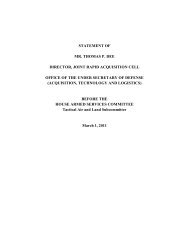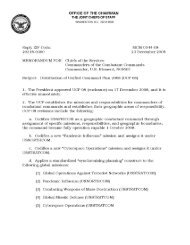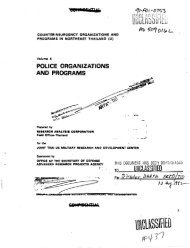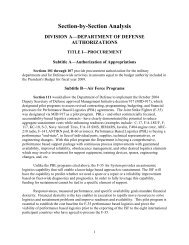dod tactical herbicide sites - United States Department of Defense
dod tactical herbicide sites - United States Department of Defense
dod tactical herbicide sites - United States Department of Defense
Create successful ePaper yourself
Turn your PDF publications into a flip-book with our unique Google optimized e-Paper software.
DOD TACTICAL HERBICIDE SITESSite 30Location: Reprocessing <strong>of</strong> Herbicide Orange, Gulfport,MississippiDate → May 1975 – March 1977Activity Description: In December 1974, the <strong>Department</strong> <strong>of</strong> the Air Force filed afinal environmental impact statement with the Council on Environmental Quality on thedisposition <strong>of</strong> Herbicide Orange by destruction aboard a specially designed incineratorship in a remote area <strong>of</strong> the Central Pacific Ocean west <strong>of</strong> Johnston Island. The USEnvironmental Protection Agency (EPA) held a public meeting in February 1975 toconsider the Air Force’s request for a permit for ocean incineration <strong>of</strong> Herbicide Orange.During that meeting, public testimony was presented that suggested that HerbicideOrange could indeed be reprocessed and the material commercially used. The EPArequested that the Air Force Logistics Command (AFLC) again investigate the feasibility<strong>of</strong> reprocessing the <strong>herbicide</strong> as a means <strong>of</strong> disposition prior to making a decision on thepermit <strong>of</strong> ocean incineration. In March 1975, a private company, Agent Chemical Inc.,(ACI) submitted a proposal to AFLC proposing that a new process had been developed toremove the TCDD from the <strong>herbicide</strong>, thus making it available to be reformulated,registered with EPA, and sold in commercial channels.From May 1975 to March 1977, ACI, the <strong>Defense</strong> Supply Agency, and AFLC worked ontests and pilot plant research to determine if the reprocessing <strong>of</strong> the Herbicide Orangestocks could be preformed safely. During the period, the <strong>Defense</strong> Supply Agency tookthe lead in managing the reprocessing program. The AFLC’s Occupational andEnvironmental Health Laboratory at Brooks Air Force Base, Texas provided the technicalexpertise. AFLC retained responsibility for all project and environmental safetyprograms. In August 1975, ACI received permission from the Mississippi Air and WaterPollution Control Commission to construct a pilot reprocessing plant at the NavalConstruction Battalion Center (NCBC) in Gulfport, Mississippi. The NCBC was thestorage site for 860,000 gallons <strong>of</strong> Herbicide Orange. The Naval authorities workedclosely with AFLC and the <strong>Defense</strong> Supply Agency in their reprocessing efforts. If thepilot plant proved successful, NCBC would be the site for the reprocessing operation.Assessment: In October 1975, ACI received a permit to construct and operate thepilot plant. The plans called for reprocessing the <strong>herbicide</strong> at both Gulfport and JohnstonIsland. The process consisted <strong>of</strong> heating the <strong>herbicide</strong> and then passing it through carbonabsorption cylinders to remove the TCDD. To reprocess all <strong>of</strong> the Herbicide Orange69



